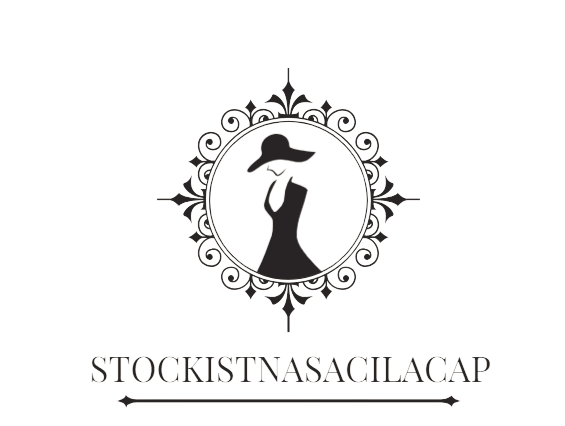It was not until modern times that the common woman had access to the variety of makeup and beauty treatments we now have today. But before eyeshadow palettes and contouring kits, there was a world of ancient beauty rituals that have been passed down from generation to generation. From the Egyptians’ red ochre and eyeliner, to the ancient Greeks’ use of olive oil and pumice stones, the makeup traditions of the past are both fascinating and bizarre. Let us take a look at a few of the most popular ancient beauty rituals from around the globe.
1. Capturing the Beauty of Antiquity: Ancient Makeup Traditions
Throughout the ages, women around the world have been creating beauty using a variety of techniques that have been passed down from generation to generation. Ancient makeup traditions have been honed through the centuries to become the refined rituals of beauty we know today.
Natural Ingredients: In ancient times, women used natural ingredients like clay, ochre, and fruit to enhance their beauty. These all-natural ingredients provided natural pigments that could help shape brows, line eyes, and rouge lips, cheeks, and eyelids.
Artful Creation: Applying makeup was often seen as an art, and women created subtle and intricate designs using a variety of techniques such as combing, outlining, and shading. For a touch of sparkle, women used crushed gemstones which were believed to impart spiritual benefits.
Rich Colours: Ancient makeup was known to be vibrant and intensely pigmented. A popular shade was called “kohl” which was created using soot or antimony and was applied in thick dramatic lines around the eyes. Many other colours were created using a unique blend of pigments including yellow, blue, green, and purple.
- Colour-rich powders and liners highlighted eyes, lips and cheeks
- Ingredients like fruit, clay and ochre were used for a natural look
- Women believed crushed gemstones provided spiritual benefits
- Kohl was used to create thick lines around the eyes
From ancient Egypt and Greece to modern China and India, women have found inspiring ways to enhance their beauty. While the ingredients and techniques of ancient makeup traditions have evolved over time, a reverence for enhancing natural beauty remains the same.
2. Exploring the Histories of Ancient Cosmetics
Ancient civilizations studied cosmetic formulas, ingredients, and processes for many years. Today, most of the makeup products and beauty treatments that women, and men, use and trust are descended from ancient beauty techniques. In fact, cosmetic archaeologists have studied ancient cosmetics and found evidence that makeup was used as early as 6,000 BC.
Women often received their cosmetics through the hands of merchants, herbalists, and even healers in ancient times. Ancient Egyptians were known to use creams, paints, and salves to create their makeup. By the time the Greeks emerged, creams, oils, and perfumes were being used, and the Japanese used powder and wax in their routine. From the beginning, cosmetics were used to both enhance physical appearance and supplement religious and festive celebrations.
The Romans loved cosmetics too, with the use of foundation, blush, eye shadow, and lashes. Tools like tweezers, kohl sticks, and mirrors were commonplace in the Roman Republic and Empire. During the Middle Ages, people switched to wearing mostly white makeup with vermilion lip color and some recommended herbal remedies for the skin like fresh lemon juice, honey, and wine.
- Ancient Egyptians used creams, paints, and salves to create makeup
- Greeks used creams, oils, and perfumes in their beauty routine
- Romans used foundation, blush, eye shadow, and lashes, as well as tweezers, kohl sticks, and mirrors
- Middle Ages women used white makeup with vermilion lip color, and herbal remedies like lemon juice, honey, and wine
3. Traditional Beauty Ingredients That Withstood the Test of Time
For hundreds of years, people have been using all-natural ingredients to enhance their beauty routine. Here are some of the most tried-and-true beauty ingredients that are still popular today.
- Clay: Clay has been used in beauty formulas for centuries to remove toxins from the skin and provide a deep cleaning. Many people use clay in face masks and baths to draw out impurities and improve their skin tone. Clay is also an effective exfoliant, sloughing away dead skin cells.
- Neem: Widely used in Ayurvedic medicine, neem has antifungal properties that can help clear up skin conditions like acne, eczema, and fungal infection. Neem oil is widely used in body lotions and other skin care products.
- Coconut Oil: Used in many skin and hair care products, coconut oil has natural moisturizing and healing properties. It can also help reduce inflammation and relieve dry, itchy skin. Coconut oil helps protect against sun damage and even has anti-aging properties.
- Turmeric: This bright yellow spice has anti-inflammatory and antioxidant properties that can help fight wrinkles and even acne. Turmeric powder can be used in both face packs and body scrubs for brighter, younger-looking skin.
Bottom Line: These are just a few of the traditional ingredients that have been used for centuries for their beauty benefits. Many of these ingredients are still widely used today because they are effective and gentle on the skin.
4. Tools of Beauty Through the Ages
Throughout generations, various tools have been used to enhance beauty. Whether a simple comb to tame wild hair or an expensive serum to reduce wrinkles, beauty regimes have remained an essential part of cultures all over the world. Here are just a few of the remarkable tools of beauty over the years:
- Comb and Brush: one of the oldest ways to help tame and arrange hair, having made their way to the 21st century, these handy tools are just as essential as ever for those coiffed-up looks.
- Kohl: used as far back as prehistoric times, this eye makeup dates back to 4500 BC Egypt and is still popular today, as it was adored by Queen Cleopatra and has ancient indications of possessing magical properties.
- Coral: crushed coral was a beauty tool of the 18th century, used to revive the face and cleanse the skin. It was thought to have the power to protect from sickness and allergies.
- Mechanical and Hand Held Mirror: in the contemporary age, the handheld or pocket mirror is a convenient way to check makeup and hair on-the-go. As far back as the 1500s, a human form was engraved onto the backside of handheld mirrors.
- Vaseline: this popular petroleum jelly was first developed in the 1840s but has remained an essential part of many beauty regimes, with its moisturizing abilities.
Whether you’re applying makeup with a brush, spritzing hairspray to taming wild locks, or using a moisturizing Vaseline, tools of beauty over the ages have been a common factor. Men and women alike have sought to enhance their physical appearance by embracing the use of various tools and products throughout the ages.
Fashion and beauty evolve with the years, but the need for impressive tools to help us with our inner and outer beauty remains consistent.
5. Unlocking the Power of Nature: Natural Makeup
For centuries, humans have looked to nature with reverence and awe. It has always provided us with nutrients, clothing, companionship, and more. Now, we can add natural makeup to that list. This amazing and ancient practice has been around since ancient times.
- Organic. Natural makeup is derived from the purest organic ingredients, and therefore boasts unparalleled purity and safety.
- Anti-Aging. Natural makeup helps minimize the appearance of wrinkles and fine lines, giving you a younger and more vibrant look.
- Versatile. Natural makeup gives you the flexibility to experiment with different looks, as it is available in a range of shades to suit all different skin types.
So, how do you access the power of natural makeup? All you have to do is head to your local store and look for 100% organic-certified makeup. You can also shop online from trusted retailers, as long as you are confident in their quality control measures.
Once you have chosen your makeup, it is important to apply it properly. For best results, start by using a moisturizing cream or serum for better primer coverage. This will ensure that your makeup stays in place and looks its best all day long.
6. Ancient Rituals for a Timeless Glow
We’ve all heard of existing beauty rituals, and while there are many modern procedures and treatments to make us look our best, have you tried turning to ancient traditions for a timeless glow? Here are some tried and tested tips for those looking to experience the same rituals enjoyed by our ancestors.
- Oil Pulling: This practice dates back thousands of years in India and Sri Lanka, and refers to swishing oil around in the mouth to remove bacteria and reduce inflammation. Each morning, try using 1 tablespoon of either sesame oil or coconut oil around the mouth and gums for 10-15 minutes.
- Ayurvedic Face Serums: Traditional Ayurvedic treatments have been used in India for centuries, and still provide the same beautifying results. Laden with essential oils such as almond and lavender, these face serums can help combat pigmentation.
- Gold Leaf Mask: Ancient Egyptians were said to use this luxurious skin therapy to keep their complexion looking youthful. Gold is known to help fight signs of ageing, so why not apply sheet or liquid gold to the face for 15 minutes, then wash off with a gentle cleanser for a glowing complexion.
From Chinese Facial Gua Sha massage that uses tools to reduce puffiness around the eyes, to honey and yogurt masks that help remove blemishes, ancient rituals offer us plenty of options to keep our skin looking its best. So rewind time and get ready to make your beauty routine timelessly glow.
Rediscovering the ancient beauty rituals of bygone times may be a wonderful voyage of discovery. They may be a reminder of just how much our beauty traditions have evolved over the years, and a way to connect to the customs of our distant ancestors. Each time we re-visit a ritual of the past, we are reminded of the culture, customs, and lifestyles the generations that came before us.


